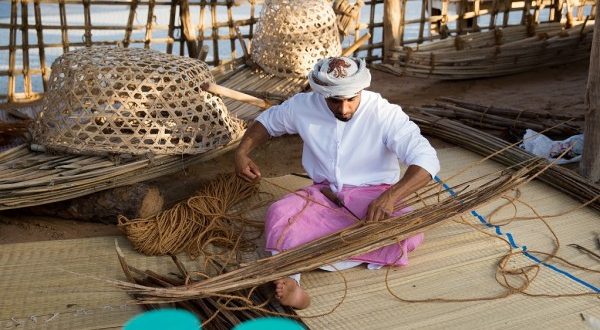Key locations like the Burj Khalifa, Dubai Mall and Burj Al Arab are always popular destinations for the millions of tourists who visit Dubai every year.
Now, however, there is also a growing interest being shown in locations that reflect the thousands of years of history of both the city and the emirate of Dubai.
In response to the increase in demand, and in line with a government strategy of preserving local history and heritage, the Dubai Municipality and local tourism and cultural bodies are devoting more attention to promoting these aspects of the emirate.
The centre of the city, adjacent to Khor Dubai, itself always popular with tourists, and according to Dubai Culture, the restored buildings of the Al Shindagha district provide insights into the lifestyle of the vibrant merchant community that once lived there. Nearby Al Fahidi Historical District, commonly referred to as Bastakiya also has detached one-storey and two-storey buildings dating back to the 19th Century, many with the iconic wind-towers that provided an early form of air-conditioning.
Dubai Museum, opened in 1971, lies in this area too. It is situated in Al Fahidi Fort, once the main fortress for the city, which is believed to have been built around 1787.
The museum has a fascinating collection of finds from archaeological excavations, along with ethnographic items that bear witness to a way of life that has now disappeared, and evidence of Dubai’s long historical role as an international trading port.
Not far away, in Jumeirah, it is possible to see the excavated remains of a prosperous port and settlement which according to the Ministry of Culture and Knowledge Development dating back to the Abbasid Caliphate around 700 – 1258 AD.
At the time, Jumeirah was part of a maritime trading network that stretched not only to the Arabian Gulf but also a way to East Africa and the Far East.
A little further from the heart of the city, in the Al Sufouh area, are the remains of Bronze Age tombs, dating back to the Umm an-Nar period, a little over 4,000 years ago, at the end of the Third Millennium BC, the ministry findings revealed.
Also in the city itself, not far from Dubai International Airport, is the settlement and cemetery at Al Qusais, which dates back to the Iron Age, between 300-1300 BC. Here excavations carried out in the 1970s found human skeletons as well as a wealth of artefacts, including pottery and stone utensils, weapons and jewellery. The discovery of numerous small metal snakes suggests that, at that time, snakes were of some religious significance to the people.
Outside the city and in the heart of the desert, at Saruq al-Hadid, is a site that has produced evidence of occupation. Archaeologists found human activity dating back to 5,000 years, according to Saruq al-Hadid website. Tonnes of copper slag, the residue from the smelting of copper ore from the Hajar Mountains, indicates that Saruq al-Hadid was an important centre of a metal-working industry, while numerous bronze and copper implements, weapons and other artefacts have been found. One of the finds, a beautifully-designed ring, has been adapted as the logo for the Dubai EXPO 2020. The site was initially discovered by His Highness Sheikh Mohammed bin Rashid Al Maktoum, UAE Vice President and Prime Minister and Ruler of Dubai.
A book titled ‘Hatta: Authenticity and Modernity’ by Dubai Municipality says that in the vicinity of the mountain village of Hatta, tombs from the Bronze Age have been found. In addition to this, studies found ancient petroglyphs (rock carvings), and settlements in the nearby wadis (valleys) that are evidence of the agricultural skills of local inhabits stretching back for centuries.
With new finds being made by archaeological teams every year, further insight into the history and heritage of the city of Dubai and of the emirate as a whole are being gained every year.
 UAE BARQ برق الإمارات – نبضك
UAE BARQ برق الإمارات – نبضك


